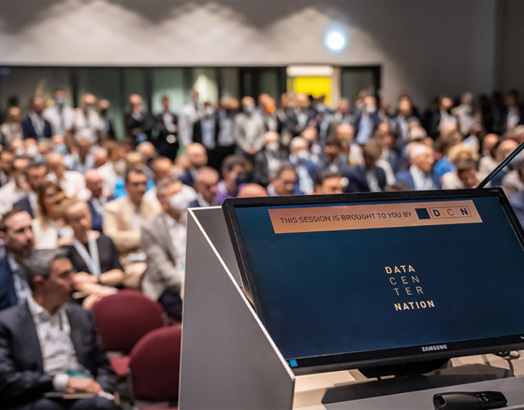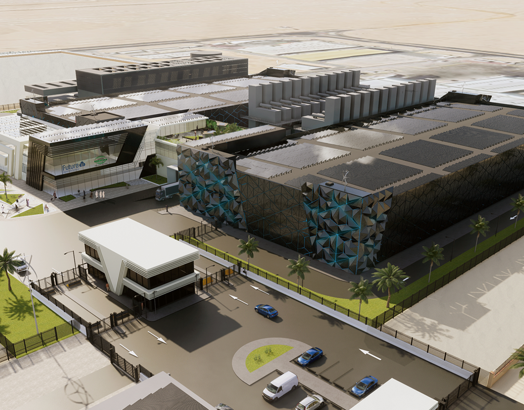
12 Jan 2024
10 minutes to read
Resilient Design for Critical Infrastructure: Ensuring Reliability in Data Centres
Data Centres have traditionally relied upon the electrical utility to provide prime power. With diesel engines always being the backup engine of choice.
However, as electrical grids become more and more congested (e.g., London, Dublin…), and businesses & governments are looking to cut carbon, alternatives are being explored.
As part of this transition, Data Centres are investigating deriving energy from natural gas engines, and/or gas turbines, for prime power. These generation technologies – “prime movers” – come in a few different types.
Engines, typically 4-stroke, are internal combustion engines, and use the tried-and-tested intake-compression-power-exhaust cycle. They are available in a variety of ratings, are reliable, and can combust various different fuels. There are two types:
- Compression-ignition: Conventional diesel gensets. Fuel is injected near the end of the compression stroke and is ignited by the hot compressed air.
- Spark-ignition: Fuel is mixed with air (“pre-mixed”), before being introduced into the cylinder for ignition via spark plugs. Generally cannot combust liquid fuels.
An alternative to engines, that is seeing increasing interest and traction is turbine technology. Air is drawn in and pressurised via a compressor, before combusting it with the liquid or gaseous fuel (combustor) to produce electricity. There are a few different types:
- Aeroderivative: Adapted from jet engines. Smaller, compact, and have a pressure ratio of larger than 30. Up to 15MW.
- Industrial / heavy-duty: Physically larger, pressure ratio <20. 15-100 MW (industrial), 100-600 MW (heavy duty).
- Micro-turbine: superior power-to-weight ratio. 65-1000 kW. Best used in small scale power/CHP applications. Thermal recuperator reduces energy needs to heat compressed air.
These Prime Movers have their benefits and limitations, as opposed to traditional options:
|
Reduced Emissions |
A holistically designed smart grid employing gas engines/turbines, batteries, and other resource/emissions economising technologies may have a kgCO2e/kWh similar to the electrical utility. This depends on the grid mix and fuel used by the prime mover, with an increasing number of low carbon biofuels and e-fuels looking to come into the market. Leaner fuel mixes trade reduced recoverable heat for lower emissions and better efficiency. |
|
Base load, Flexibility |
Engines & Turbines function best at high, constant loading. They are reliable enough for mission-critical applications. Electrical paralleling of engines (dead bus, random access…) is well documented and standardised (grid codes, G99…). Turbines and engines can, in theory, be easily paralleled in an MV ring, or arranged in N+1/2. Distributed vs a block redundant scheme can mitigate energy bridging times for UPS. |
|
Reduced grid demand |
Prime power is derived through leveraging the gas grid. Depending on the location, Demand Side Response (DSR) schemes may even enable grid support. In some regions, the gas grid is also more reliable than the power grid. |
|
Transition to future fuels |
Natural Gas can be a stepping stone to greener alternative fuels. Gas engine manufacturers offer products capable of combusting a natural gas-hydrogen mix. Upgrades are available to increase the proportion of Hydrogen. Many renewable fuels are viable for combustion, such as HVO – which is a popular current drop-in replacement for diesel. Turbines on the other hand have much more flexibility in hot-swapping between many fuel types. |
|
Cogeneration (efficiency) |
For Turbines, heat generated can be used in double/triple effect absorption chillers, steam driven centrifugal chillers, or in steam turbines to produce electricity (economical above 30MW). Engines can also be employed in CHP applications (see Figure 1). |
|
Ramp time |
Gas engines have many stages of combustion that delay load acceptance (40-120s to FLA) Turbines take even longer to ramp – 20 mins from cold, or 5 min for the fastest models. Hot standby/distributed load can reduce ramp times. |
|
Fuel storage |
Natural Gas cannot be stored on-site, in the quantities needed for Data Centres (12+ hours, usually 48). A connection to the gas mains is required – similar to the traditional electrical grid connection. Spark-ignition engines cannot combust storable liquid fuels. If backup diesel or HVO is used, then additional CAPEX will be incurred to provide traditional standby diesel gensets (stranded assets). Consider renewable fuel maintenance costs (polishing, shelf-life, lead time…). |
|
CAPEX |
Engines & Turbines can have long lead times and be significantly more expensive to source than traditional solutions. 10-15+ minute lithium-ion autonomies are expensive, and come with special fire risks. |
|
Permitting |
Though Natural Gas is greener than diesel, emissions permitting can be difficult in some areas. In the UK/EU, the IED and MCPD can constrain operation of emitting assets. |
Other prime mover technologies exist – and Fuel Cells deserve mention. There are 5 main types: PEMFC, AFC, PAFC, MCFC, SOFC. Generally, they boost efficiencies (40-60% electrical), and can be quiet and emission-free. However, they also have larger footprints and CAPEX, and a lower Technology Readiness Level (TRL).
In conclusion, the energy transition is not a simple problem. Traditional technologies, fuels, and simple source-to-load power systems are replaced by a diverse array of prime movers, renewable e-fuels, and complex bidirectional power flows, necessitating a more holistic design and control perspective.
What might occur during the energy transition then, in the short, medium, and long terms?
- Short term – transition from diesel to HVO. PPAs and other resource offsets (e.g., water conservation/positivity) used to mitigate environmental impact.
- Medium term – microgrids, diesel phased out, BESS, e-fuels, turbines, DSR schemes…
- Long term – impossible to say for certain. Decentralised industrial power schemes could have enduring popularity. Alternatively, if national electrical grids sufficiently reinforce and decarbonise, perhaps Data Centres will migrate back to a more traditional connection, with renewable fuels for back-up power? There could be a diverse range of configurations, constrained by factors such as cost, local legislation, business strategy, or application.
This article, along with the supporting article on future fuels, formed part of REDs research and development of off-grid microgrid solutions as an alternative power source for grid constrained areas. Further information on microgrids will be published as part of the wider series of articles on Resilient Design for Critical Infrastructure: Ensuring Reliability in Data Centres.
Latest Insights
View all insights








